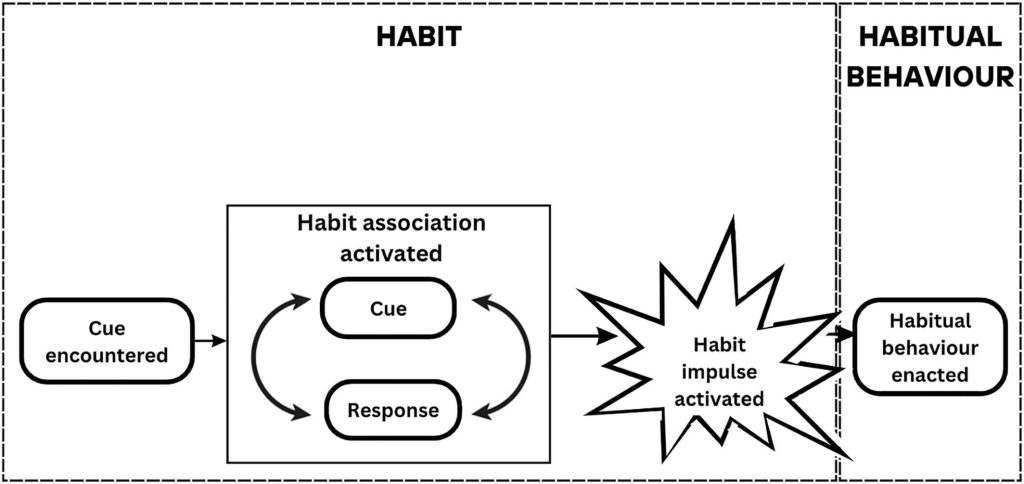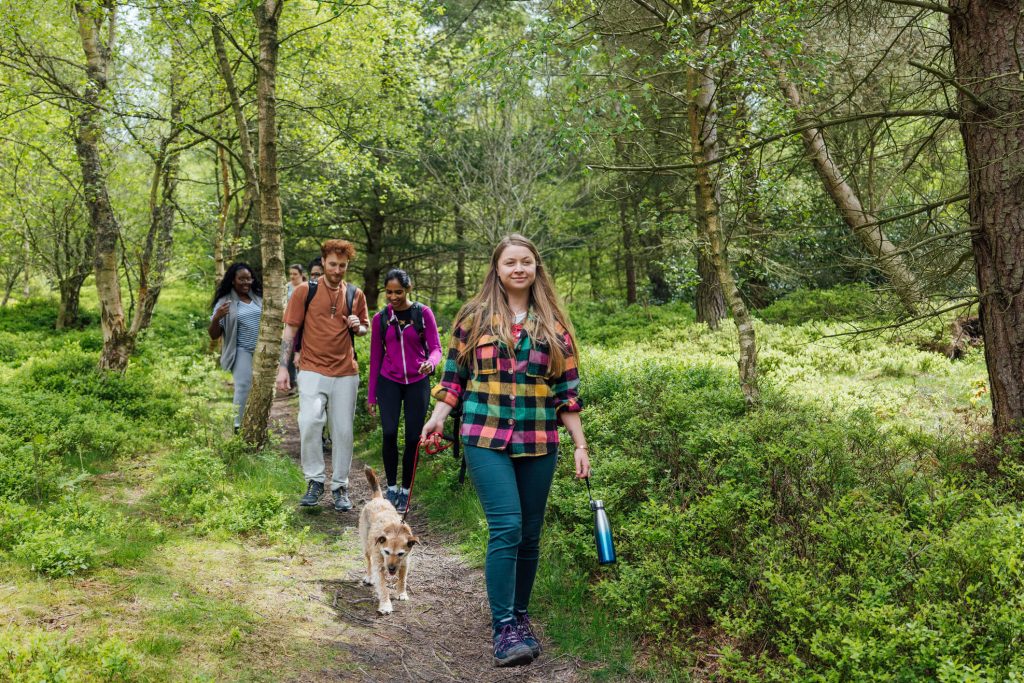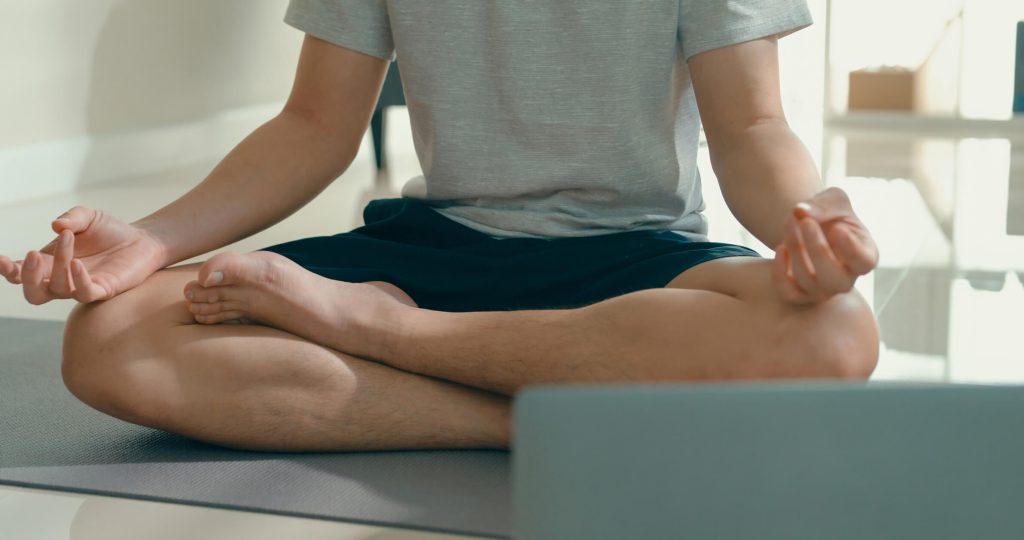
How to Break Bad Habits and Make Good Ones Stick


How to Break Bad Habits and Make Good Ones Stick
Maintaining a healthy lifestyle often feels like an uphill battle in our fast-paced, modern world. We find ourselves trapped in cycles of bad habits—reaching for junk food, skipping workouts, or losing sleep to late-night screen time. Breaking these unhealthy patterns can seem daunting but essential for our overall well-being.
The great news is that with the right strategies, we have the power to replace these detrimental habits with positive, health-enhancing ones that can last a lifetime. This article delves into practical and scientifically proven methods for breaking free from bad habits and making good ones stick, empowering you to embrace a healthier, more vibrant life.
Whether you aim to eat better, exercise more, or simply get a good night’s sleep, these insights will help you turn your goals into lasting realities.

The Science of Habit Formation
Whether you realize it or not, habits shape your daily life. Routines often guide your actions and decisions from the moment you wake up to when you go to bed.
These habits can be as simple as brushing your teeth or as complex as how you approach your work tasks. They shape your behavior, influence your productivity, and impact your overall well-being.
Habits are not just routines. They are powerful tools that operate largely on autopilot, allowing your brain to conserve energy for more demanding tasks. When you establish a habit, your brain creates a neural pathway that makes the behavior easier and more automatic over time. This is why ‘breaking’ a bad habit or forming a new one can be challenging; it requires rewiring your brain and creating new pathways.
Getting into a healthy routine is one of the best things you can do to stay healthy. When you do this, those behaviors become automatic. Establishing healthy habits helps it all flow from there.
Before moving on, let’s clear up a couple of things. When we talk about “habit,” we’re referring to the cognitive process where a specific trigger automatically makes you want to do something. This happens because you’ve practiced that response over and over again.
On the other hand, “habitual behavior” refers to the action itself—the thing you do automatically when that trigger shows up. Understanding this difference is crucial because it helps you know whether to focus on changing how your mind reacts to the trigger or the action itself.
While habit formation is based on theory (and there are many), we’ll cover a more modern model of habit formation: Cue → Association → Response → Reward.

Cue
Habits are formed through repeated behaviors in specific cue contexts, creating a memory association between the cue and the action. This cue acts as the trigger that initiates the habit loop, which could be as simple as a time of day, a specific place, an emotional state, or another action.
For example, a morning jog becomes associated with sunrise (time of day cue), reading in a cozy chair in the living room (specific place cue), meditation with stress (emotional state cue), and drinking water with each break you take throughout the work day (action cue). These cues help establish and maintain healthy habits.
Conversely, unhealthy cues can lead to detrimental habits, such as late-night snacking while watching TV (time of day cue), smoking in a particular social spot (specific place cue), turning to junk food when feeling anxious (emotional state cue), or mindlessly scrolling through social media upon waking (action cue).
Association
In habit formation, association is pivotal. Over time, consistent pairing of a specific cue with a corresponding action strengthens this association. For instance, morning exercise links the cue of waking up with physical activity. Similarly, feeling the urge to snack when sitting on the couch associates that cue with eating. This strong association enables the cue alone to trigger the action automatically, embedding habits deeply into routines.

Response
Following the cue, the response is the behavior or action that forms the core of the habit loop. With repetition, this response becomes increasingly automatic. For example, feeling stressed (cue) prompts meditation (response), or waking up (cue) leads to jogging (response). Over time, these behaviors require less conscious effort, becoming almost reflexive upon encountering the cue.
Reward
In habit formation, the reward reinforces behavior by providing positive reinforcement after the response. Rewards can be tangible, such as treats, or intangible, like a sense of accomplishment. Neurotransmitters, notably dopamine, play a crucial role in this process.
When a behavior results in a reward, dopamine release strengthens the association between the cue and the response, solidifying the habit loop. Anticipation of rewards can trigger dopamine release before the behavior, creating a craving that drives habitual behavior.
Strategies To Break Bad Habits and Make Good Ones Stick
Now, let’s explore some practical research-based strategies to help you replace detrimental habits with positive, lasting routines. By implementing these strategies mindfully and consistently, you can cultivate habits that contribute to your overall well-being and long-term success.
Focus on Replacing Bad Ones with Good Ones
So, here’s the thing. You can’t really “break” bad habits. What science tells us is that what’s more likely is that we learn new habits that hopefully replace the bad ones.
Research suggests aligning changes in behavior with a routine or time cue when starting to build new habits.

Healthy Eating Habits
A study with 192 adults examined whether routine- or time-based cues were more effective for adopting healthy nutrition behaviors. Participants selected a healthy habit and a cue, then tracked their actions and how automatic they felt over 84 days.
The study found that time- and routine-based cues were equally effective for forming healthy eating habits. So, linking healthy eating to your daily routine or a specific time of day can help make those habits stick.
It’s important to come up with the right cues or routines that will fit best into your day, but here are some ideas:
- Set regular meal times. Eat meals and snacks at the same times every day. This regularity can help your body anticipate and get used to these eating times.
- Cook a healthy meal when you get home or pick one up on your way home daily to avoid overeating or snacking before dinner.
- Dedicate Sunday afternoons to preparing healthy meals and snacks for the week.
- Replace late-night snacking with a cup of herbal tea as part of your winding down routine before bed.
- Plan a healthy snack or meal afterward if you have a regular exercise routine. For example, have a Protein Breakthrough shake or a bowl of Greek yogurt with fruit right after your workout.
- Place visual cues, such as sticky notes or fridge magnets, with reminders about your meal times and routines. These can serve as prompts to stay on track.
- Stack new healthy eating habits onto existing routines. For example, if you always have coffee in the morning, pair it with a nutritious breakfast routine.
Increasing Physical Activity
These principles also apply to changing physical activity habits. A study of 94 new gym members explored increasing physical activity through habit formation principles. The intervention aimed to help new gym members form exercise habits by focusing on preparatory activities, such as gathering workout gear or changing clothes at home, to make exercise a regular part of their routine.
Participants used cues to build habits, such as placing their gym clothes on their bed in the morning to remind them to exercise after work. Other suggested cues included placing a water bottle on their desk or using running shoes as a visual reminder for physical activity. In week four, participants received a follow-up phone call to reinforce these techniques and ensure consistency.
The intervention led to a significant increase in physical activity for the experimental group after eight weeks, as measured by accelerometers and self-reports. They also used more cues and maintained better practice consistency, boosting their activity levels.
Before adding new habits to your daily life, it’s important to consciously stop certain behaviors and break the association between cues and responses. Recognize and accept what you need to change and find the inspiration to move forward in a different direction. You’re already on your way there if you’re reading this article.
Avoid Stress Pitfalls

If you have a goal in mind and want to build healthy habits, it’s important to be mindful during stress.
In a study of 80 healthy adults, researchers investigated how stress influences learning and behavior, particularly whether it leads people to rely on habits rather than considering the consequences of their actions. Participants performed tasks to earn food rewards like chocolate milk or orange juice. Some underwent a stress-inducing cold water test beforehand, while others did not.
After learning the tasks, participants could eat one food reward until full, which decreased its appeal. Under stress, participants tended to rely more on habits, reducing their awareness of the relationship between actions and outcomes. This led to habitual actions even when the reward was no longer appealing.
This study suggests that stress shifts behavior from goal-directed actions to automatic responses, making you less aware of consequences and more likely to repeat behaviors without thinking. It also impairs your ability to learn and remember actions needed to achieve your goals, making it harder to stick to new routines.
Stress reduces your awareness of how your actions affect outcomes, so you might continue unhealthy behaviors without realizing their negative effects. If a habit forms under stress, it tends to persist even when it’s no longer rewarding, making it hard to change. The timing of stress is crucial; stress before learning a new habit can have different effects than stress during or after learning.
Physical stress such as fatigue, pain, low blood sugar, poor sleep, or hunger can also significantly increase your odds of making bad decisions or giving in to temptations. If you’re susceptible to this, it helps to stabilize your blood sugar or address your physical ailments, and avoid putting yourself in tempting situations while you’re not physically your best.
Be patient and kind to yourself—it’s okay to mess up. Recognize that setbacks are a natural part of the process, and use them as opportunities to learn and grow. Stay focused on your goal, and remember that consistency, rather than perfection, is key to forming lasting habits.
Learn more about how stress can derail your health and wellness goals in this article and how to support your body nutritionally during stressful times in this one.
Take Small Steps
When forming healthy habits, taking small steps is crucial for sustainable change. Start with intention—initially, you consciously decide to take these actions. As you repeat them consistently, they gradually become more automatic and move into habitual behavior. This shift reduces the need for conscious effort and decision-making, making it easier to maintain the habit over the long term.
Breaking down larger goals into manageable actions makes them less daunting and increases the frequency of achieving small victories. Each accomplishment releases dopamine in the brain, reinforcing the behavior and making it more likely to be repeated.
In an eight-week study of 104 overweight participants, researchers explored the effectiveness of implementing simple steps towards healthy habit formation on weight loss to create a calorie deficit. Participants received a leaflet containing simple steps such as:
- Keep to a meal routine – eat at the same times every day.
- Walk 10,000 steps each day.
- Stand up for ten minutes of every hour.
- Focus on your food. Don’t eat while distracted, like watching TV or on the go.
Researchers weighed participants weekly and had them rate how automatic the new behaviors felt.
After eight weeks, people in the intervention group lost an average of 2.0 kg, compared to 0.4 kg in the control group. At 32 weeks, participants incorporating the simple steps lost an average of 3.8 kg, and 54% achieved a weight loss of 5% or more.
Overall, people felt their habits became more automatic over the study period. In the final questionnaire, 80% of participants said some behaviors had turned into habits.
By focusing on achievable steps and celebrating each milestone, you create a positive cycle of reinforcement that supports long-term habit formation. This approach makes the journey enjoyable and ensures you stay committed to your health and well-being over time.

Find Your Why
Knowing the deeper reasons behind your desire for change provides strong motivation to sustain new behaviors. Clarifying your purpose aligns your actions with your values. By understanding your reasons for adopting healthier habits, you cultivate a mindset supporting commitment, resilience, and lasting success.
Matt Gallant, CEO of BIOptimizers, has experienced this. “The drive to help redefine and transform the world’s health propels me into action. I just do what I need to do. I have endless energy and drive.” He is unstoppable in making biological optimization affordable and available worldwide.
Wade Lightheart, President of BIOptimizers, became unstoppable in his quest for bodybuilding success because he was driven by purpose. The drive becomes limitless when you find your purpose and align your life with it.
To help you zone into your why, try using the “Seven Levels Deep” exercise: ask, “Why?” seven times to identify your most compelling purpose.
For example:
1. Why do you want to get healthy and lean out?
- I want to look good in the mirror.
2. Why do you want to look good in the mirror?
- Because I want to feel more confident and comfortable in my own skin.
3. Why do you want to be more confident and comfortable in your own skin?
- Because I was made fun of as a kid and want to improve my body image.
4. Why do you want to improve your body image?
- So that I have better self-esteem and confidence.
5. Why do you want to have better self-esteem and confidence?
- So that I can get back to dating.
6. Why do you want to get back to dating?
- So that I can find myself a great partner.
7. Why do you want to find yourself a great partner?
- Because it’s my life goal to start a family and be a great dad.
This process helps you recognize your “whys” and then dig deeper.
This is all in alignment with seeking internal rather than external rewards. In a study of 118 participants, researchers focused on increasing health behaviors such as vitamin C intake and flossing. They explored how participants perceive the reward value of these behaviors, considering factors like pleasure, usefulness, benefits, and intrinsic motivation.
Participants in the vitamin C group received online education and planned when to take their tablets daily. In the flossing group, participants attended a session where they learned about its benefits, received instructions, created specific plans, and verbally committed to flossing every night.
Both behaviors and habit strength increased after the interventions. Pleasure was linked to better habits in both routines, while intrinsic motivation specifically enhanced vitamin C habits. These findings suggest behaviors driven by personal enjoyment or intrinsic motivation are more effective in forming lasting habits than those motivated solely by expected outcomes or perceived benefits.
Mindfulness-Based Interventions

The benefits of mindfulness and meditation go beyond encouraging calm and awareness. They can help promote healthy habit formation.
Mindfulness involves focused, non-judgmental awareness of the present moment. It helps you understand the triggers and rewards of your habits. Through mindfulness, you become aware of the internal and external stimuli driving your actions and the rewards reinforcing these behaviors.
This awareness allows you to interrupt automatic routines, evaluate your actions, and realign them with your life goals. Continuous mindfulness practice reprograms your cognitive processes, shifting from reactive patterns to consciously chosen habits.
Researchers studied mindfulness-based interventions to promote healthy behaviors in 51 Spanish university students at risk for unhealthy habits. Researchers randomly assigned students to a seven-week mindfulness treatment group or a control group.
The mindfulness group practiced flow meditation to improve eating habits, reduce substance use, and enhance rest. Participants were encouraged to practice mindfulness daily. The intervention’s effectiveness was measured by comparing pre-test and post-test results within both groups.
Results showed that the mindfulness group had significant improvements in healthy eating habits, reduced tobacco, alcohol, and cannabis use, and better resting habits compared to the control group. Females in the mindfulness group benefited more from the treatment than males.
Engineer and Protect Your Environment for Success
You’re much more likely to eat unhealthy foods if they’re in your home or within reach. The weight settling point model takes into account your surroundings that govern your weight, such as portion sizes and the presence of food ads around you. It suggests that obesity is a product of both physiological changes and their environment.
Many people have successfully broken habits around food by ensuring that they have healthy foods around, and only enjoying treats outside of their homes or on special occasions. Whatever your goals are, set up your most-frequented environments so that it’s natural to move towards your goals and difficult to move against them.
How Long Does it Take to Change Habits?
I can’t give you a guaranteed timeline for when a habit will become automatic and officially an “easy” part of your life, but I can tell you you’ve got to be in it for the long haul. Changing habits will not happen overnight. I’m not here to tell you there are quick fixes.
In the beginning, establishing a new habit is easier. With motivation and focus, you consciously initiate actions. However, as you repeat these actions over time, they become increasingly automatic. This shift is facilitated by your established cues and routines, which reduce the need for conscious attention or motivation. Eventually, habits persist even when initial motivation fades, freeing up mental resources for other tasks.
The 21-day rule to break or form a habit has now been debunked. Here’s what the studies tell us:
- One study of 192 adults tracked the time it took for new healthy nutrition behaviors to become automatic. The time varied widely between 4 and 335 days, averaging 59 days.
- Another study tracking nutrition and physical activity habits found an average of 66 days before reaching automaticity.
- Finally, a meta-analysis of ten studies focused on increasing healthy physical activity habits. Researchers found that interventions lasting more than 12 weeks are less effective than those lasting 12 weeks or less. This is likely because habit strength peaks around 12 weeks. After that, the strength of the habit begins to decline and then stabilizes.
The key takeaway is that habit formation takes time and consistent effort. Be patient and stay committed, using cues and routines to support you along the way.
How to Boost Your Willpower and Self-Control

Okay, so it will probably take a while to establish new healthy habits successfully. Some people have an easier time than others. A study found that having these traits may make you more likely to have more self-control:
- Positive mood: can help people manage challenging tasks better
- Lower arousal levels: reduce automatic responses
- Intrinsic motivation: driven by internal rewards rather than external
- Higher self-esteem: possibly due to better emotional and behavioral management capabilities.
These traits may contribute to greater self-control, facilitating the establishment of healthy habits over time. But what if you don’t have these? Everybody is different. There are still other ways to help increase your willpower or self-control and help you achieve success.
Practice Makes Perfect
A wise person once told me, “Fake it until you make it.” You have to practice self-control before it becomes easier. A study of 92 adults explored this idea by having to avoid consuming sweets or squeezing a handgrip for as long as possible twice daily for two weeks.
Researchers tested improvement in self-control using a cognitive task. Those participants who practiced self-control daily significantly improved their self-control, while the control group did not.
Work Smarter, Not Harder
Other psychologists suggest supporting self-control by working smarter rather than harder. You can do this by having a “toolbox” of strategies and applying them as needed, depending on the situation. Here are some ideas to try:
- Make decisions in advance to avoid making the wrong decision when under stress or feeling emotional.
- Determine a type of self-punishment for when you get off track, like having to make a monetary donation.
- Share your goals with a supportive friend or join a group where someone can hold you accountable. Accountability enhances commitment and motivation.
- Don’t forget those routines and cues. Put them in place to increase the association and likelihood of continuing that healthy habit.
Manage Your Stress
Stress can impair self-control, so managing it effectively is crucial.
A study of 4,591 individuals throughout four countries – the United States, Germany, Sweden, and Poland – explored the link between stress and self-control. All participants completed a questionnaire designed to study levels of self-control and stress.
Analysis across all four countries consistently showed a strong relationship between experiencing stress and low self-control.
Some science-backed ways to reduce stress include:
- Yoga
- Mindfulness
- Enjoying some music
- Regular exercise
- Visiting nature
- Having a cup of tea
Accountability
If you struggle with self-control, you can use accountability methods, such as having an accountability partner, getting a coach, or using an app, to help build new habits.
A study of 91 university students explored their new study habits over six weeks. Before tracking, students recorded when to start, how long the habit would take, and its associated goal. They also set daily reminders. A specially designed app recorded:
- Frequency of repetition
- Motivational struggles
- How automatic their behaviors became
Researchers determined that app-based habit-building works as the automaticity of behavior increases with habit repetition, and motivational conflicts decrease as habits become more automatic.

Your Guide to Lasting Health and Fitness Goals
While we’ve explored studies about habit change, these results are generally applied to the masses. You are an individual, and the optimal way for you to achieve your health and fitness goals is as unique as your:
- Personal physiology
- Genetics and family history
- Gut biome
- Life and health goals
After hearing so many customers share these struggles, BIOptimizers knew they had to do something. So, they fused 50 years of combined experience with scientific evidence to create the world’s most complete nutrition guide, showing you how to create the perfect forever diet.
The Ultimate Nutrition Bible will guide you judgment-free through every science-backed step to crafting the ideal food to eat to live your best life.
To help ensure that you reach the point of automaticity with your new and improved habit, we also include The Ultimate Nutrition App as part of the Ultimate Nutrition System. The app will provide you with personalized fitness and nutrition plans, progress trackers, reminders, and notifications.
Conclusion
Understanding the nature of habits and how they work empowers you to make intentional changes through small, manageable steps and consistency. Patience, persistence, and adaptability are key to lasting change. Be compassionate with yourself during this process; setbacks are natural. View mistakes as learning opportunities and celebrate progress—no matter how small—acknowledging your efforts towards positive change.
References
- Gardner B, Rebar AL, de Wit S, Lally P. What is habit and how can it be used to change real‐world behaviour? Narrowing the theory‐reality gap. Soc Personal Psychol Compass. 2024;18(6). doi:10.1111/spc3.12975
- Orbell S, Verplanken B. Changing behavior using habit theory. In: The Handbook of Behavior Change. Vol 708. Cambridge University Press; 2020:178-192.
- Keller J, Kwasnicka D, Klaiber P, Sichert L, Lally P, Fleig L. Habit formation following routine‐based versus time‐based cue planning: A randomized controlled trial. Br J Health Psychol. 2021;26(3):807-824. doi:10.1111/bjhp.12504
- Kaushal N, Rhodes RE, Spence JC, Meldrum JT. Increasing physical activity through principles of habit formation in new gym members: A randomized controlled trial. Ann Behav Med. 2017;51(4):578-586. doi:10.1007/s12160-017-9881-5
- Schwabe L, Wolf OT. Stress prompts habit behavior in humans. J Neurosci. 2009;29(22):7191-7198. doi:10.1523/jneurosci.0979-09.2009
- Attridge N, Pickering J, Inglis M, Keogh E, Eccleston C. People in Pain Make Poorer Decisions. Accessed July 12, 2024.https://pure.port.ac.uk/ws/portalfiles/portal/21954478/People_in_pain_make_poorer_decisions.pdf
- Skrynka J, Vincent BT. Hunger increases delay discounting of food and non-food rewards. Psychon Bull Rev. 2019;26(5):1729-1737. doi:10.3758/s13423-019-01655-0
- Gardner B, de Bruijn GJ, Lally P. A systematic review and meta-analysis of applications of the self-report habit index to nutrition and physical activity behaviours. Ann Behav Med. 2011;42(2):174-187. doi:10.1007/s12160-011-9282-0
- Judah G, Gardner B, Kenward MG, DeStavola B, Aunger R. Exploratory study of the impact of perceived reward on habit formation. BMC Psychol. 2018;6(1). doi:10.1186/s40359-018-0270-z
- Soriano-Ayala E, Amutio A, Franco C, Mañas I. Promoting a healthy lifestyle through mindfulness in university students: A randomized controlled trial. Nutrients. 2020;12(8):2450. doi:10.3390/nu12082450
- Speakman JR, Levitsky DA, Allison DB, et al. Set points, settling points and some alternative models: theoretical options to understand how genes and environments combine to regulate body adiposity. Dis Model Mech. 2011;4(6):733-745. doi:10.1242/dmm.008698
- Gardner B, Lally P, Wardle J. Making health habitual: the psychology of ‘habit-formation’ and general practice. Br J Gen Pract. 2012;62(605):664-666. doi:10.3399/bjgp12x659466
- Lally P, van Jaarsveld CHM, Potts HWW, Wardle J. How are habits formed: Modelling habit formation in the real world. Eur J Soc Psychol. 2010;40(6):998-1009. doi:10.1002/ejsp.674
- Ma H, Wang A, Pei R, Piao M. Effects of habit formation interventions on physical activity habit strength: meta-analysis and meta-regression. Int J Behav Nutr Phys Act. 2023;20(1). doi:10.1186/s12966-023-01493-3
- Muraven M. Building self-control strength: Practicing self-control leads to improved self-control performance. J Exp Soc Psychol. 2010;46(2):465-468. doi:10.1016/j.jesp.2009.12.011
- Fujita K, Orvell A, Kross E. Smarter, not harder: A toolbox approach to enhancing self-control. Policy Insights Behav Brain Sci. 2020;7(2):149-156. doi:10.1177/2372732220941242
- Nielsen KS, Bauer JM, Hofmann W. Examining the relationship between trait self-control and stress: Evidence on generalizability and outcome variability. J Res Pers. 2020;84(103901):103901. doi:10.1016/j.jrp.2019.103901
- Woodyard C. Exploring the therapeutic effects of yoga and its ability to increase quality of life. Int J Yoga. 2011;4(2):49. doi:10.4103/0973-6131.85485
- de Witte M, Spruit A, van Hooren S, Moonen X, Stams GJ. Effects of music interventions on stress-related outcomes: a systematic review and two meta-analyses. Health Psychol Rev. 2020;14(2):294-324. doi:10.1080/17437199.2019.1627897
- Elliott LD, Wilson OWA, Holland KE, Bopp M. Using exercise as a stress management technique during the COVID-19 pandemic: The differences between men and women in college. International Journal of Exercise Science. 2021;14(5):1234.
- Ewert A, Chang Y. Levels of nature and stress response. Behav Sci (Basel). 2018;8(5):49. doi:10.3390/bs8050049
- Steptoe A, Gibson EL, Vounonvirta R, et al. The effects of tea on psychophysiological stress responsivity and post-stress recovery: a randomised double-blind trial. Psychopharmacology. 2007;190(1):81-89. doi:10.1007/s00213-006-0573-2
- Stojanovic M, Grund A, Fries S. App-based habit building reduces motivational impairments during studying – an event sampling study. Front Psychol. 2020;11. doi:10.3389/fpsyg.2020.00167
